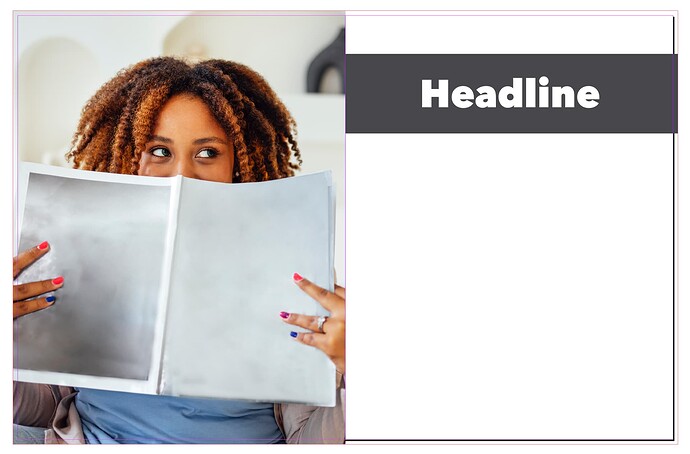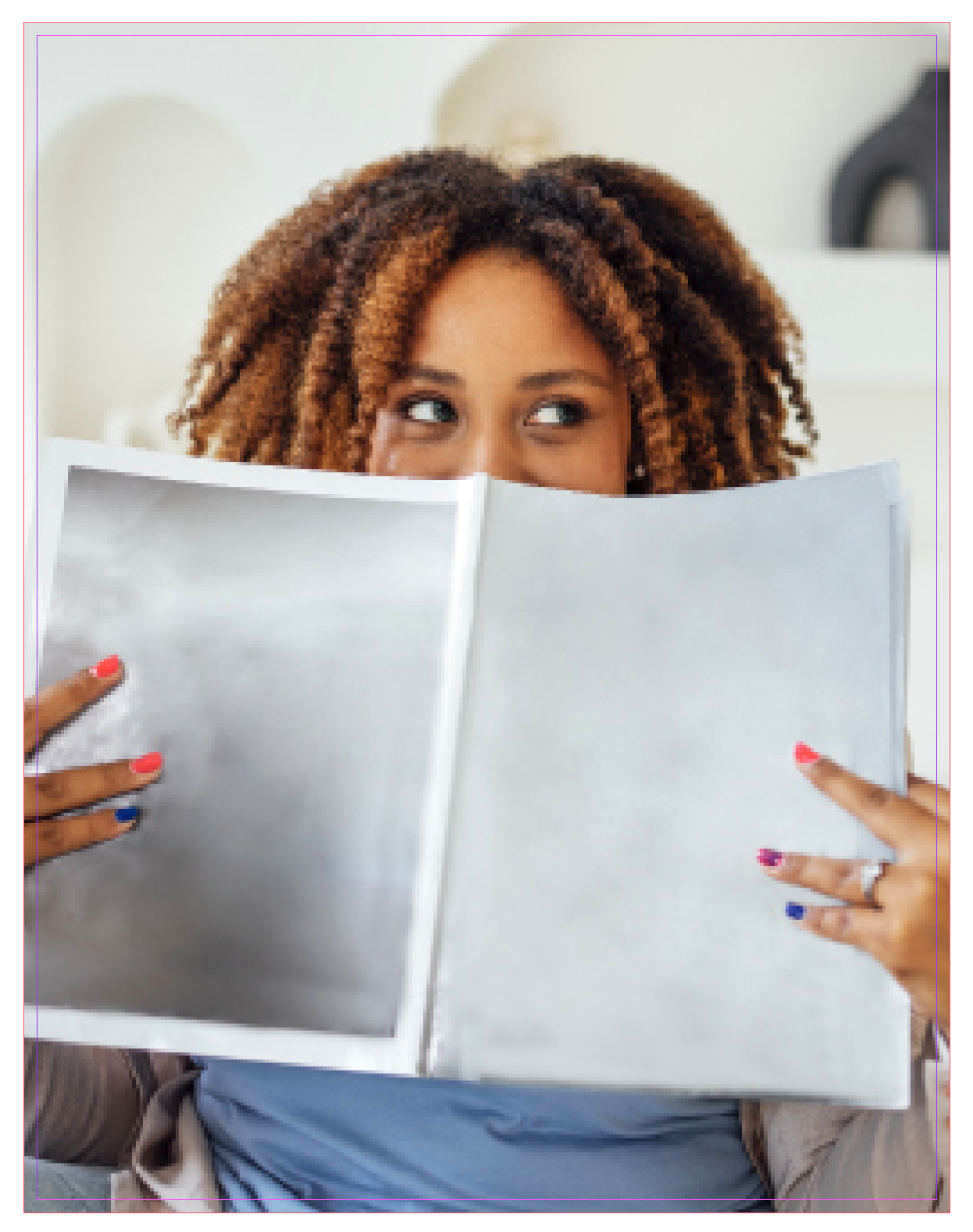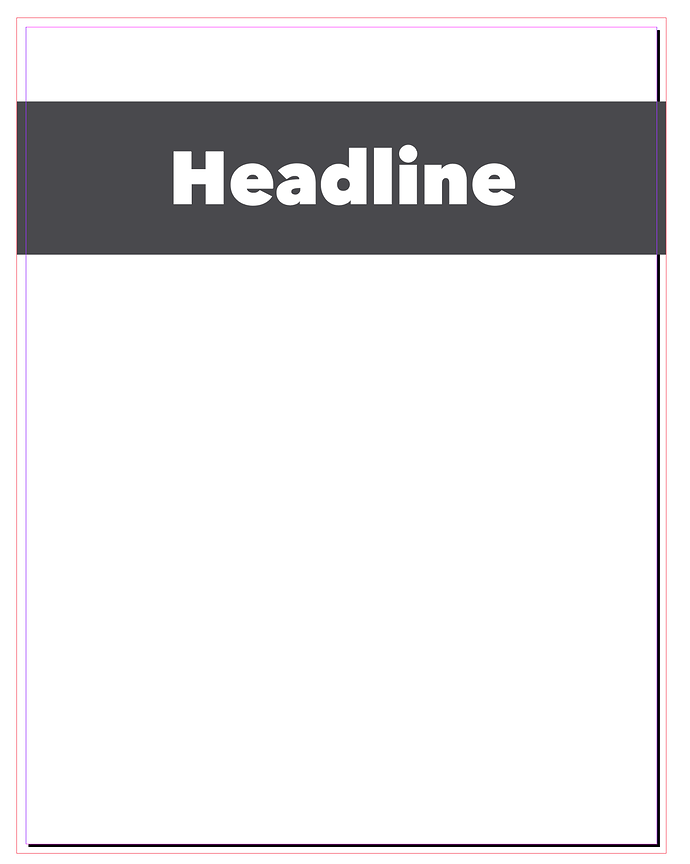I must say not once have I sent in final file in single pages format, all the more remarkable that includes paste-up artwork.
That’s assuming the naming convention is strictly adhered to. My glass is always half-empty.
What would you do on the centerspread or the cover of a saddle-stitched booklet when an image runs across the gutter or the cover spine? Would you still send separate pages, leaving it up to the printer’s imposition software to merge them back together?
Do you build the InDesign file as separate pages or as spreads? If built as spreads, how do you achieve a bleed in the gutter? If built as separate pages, for me, anyway, I’d lose some of the visual feedback I depend on to ensure a visually unified and coherent design across the spread.
Yeah, same here with paste-up, where the film strippers would deal with the imposition. Maybe the two of us have an old habit from our cave-dwelling days. ![]()
![]()
I know you asked Steve, but I build as single pages in InDesign but use facing pages. If an image or shape, or art crosses the center spread gutter, InDesign manages the bleed accordingly. It isn’t something you have to somehow build in to the spread. Just my 2 cents.
When people asked me what I did for a living, I told them that I was a male stripper.
Yes. It doesn’t make sense to break something apart (a center spread) that is just going to get put back together, but that’s how PDFs are required from the printers I am working with.
Definitely spreads — design the way the reader will encounter.
I hate to say it, but I do this manually. If the spread has one full bleed photo or color that spans two pages, ID can output it correctly. More often than not, the spreads I design have elements that butt up the the gutter or a headline that is split between two pages; in that case, doing it manually is the only way I know since the content on the left page needs to bleed to the right gutter and the content on the right page needs to bleed to the left gutter. Maybe there’s an InDesign power user that can enlighten me if that’s not the best way to do it.
So this spread…
becomes these single pages…
Thanks. This single-page thing is interesting to me since I never knew it was an issue.
I’ve been trying to think why I’ve always sent documents as spreads, and I suspect it’s because that’s how I was taught to do it back in the days of paste-up. I also recall a magazine sheetfed printer and a web press printer we used to work with that requested spreads during their sit-down meetings before the contracts were signed. I’ve never had a printer request individual pages. I don’t think I’ve ever asked a printer which they prefer, but I’ve never had one complain either. Come to think of it, none of the designers I’ve hired over the years ever mentioned it either, but maybe they were only following my lead. Weird.
As you said, it’s odd. Maybe I’ve been living in a bubble. ![]()
Why bother with the gutter bleeds at all?
Using your example, below,…
…as you mentioned, the two pages are merged and printed as an imposed spread (one big image). Unlike the outside edges, where a bleed margin is required for the wiggle room in a physical trim, the gutter in pixel-perfect digital imposition doesn’t need it. Instead, the gutter bleed is removed during imposition, making it unnecessary.
Yes, in theory, it seems unnecessary, but that’s the way PDFs have been requested lately.
If that’s what the printer requests, yeah, always do it that way. I think printers often request files with lots of built-in failsafes since it gives them the latitude to adjust as needed.
On multipage documents you don’t need an inside bleed for spreads, or the front and back covers. In Document Setup, make sure Facing Pages is checked and the Start Page is 1. Change the inside bleed to 0, but keep the bleed for the top, left and right as you have it.
When you go to make the PDF, do
File > Export,
Format: Adobe PDF (Print),
Pages : All
Export as: Pages
Marks and Bleed: Bleed and Slug: check yes for Use Document Bleed Settings
You’ll get a PDF with all single pages, and the bleed appears all around the live area, but not in the gutter in the middle of the spread. Page 1, the front cover, will have a bleed on just the top, right, and bottom. The back cover, as long as it’s an even number, will have a bleed on just the top, left, and bottom.
If the inside bleed is set to anything above 0, then that’s how much of the facing page you will see on the PDF. In my experience, the printer’s imposition software always removes that excess, but it can be confusing to the client if they see it, so I eliminate the inside bleeds on multipage documents.
I think there’s a lot they do on their own to make stuff work on their presses and they don’t bother to relay that info back us since it’s too time consuming. My clients contract with printers directly. The best printers send a PDF with all the specs and a Distiller file with their preferred settings. The worst ones will say to send ‘whatever’ and they’ll fix it.
I’ve never been asked to send a multipage doc as spreads. It’s always been either a PDF with single pages or send all the single pages as numbered separate files.
Yes, I’ve had both those things happen, and I always appreciate getting the specs. I don’t like working with printers (or their salespeople) who seem annoyed when asked. At the opposite end, I once had a book printer also send me an expensive monitor calibrated to their platesetters, along with instructions for ambient lighting, for a coffee table book I designed. Unfortunately, they requested that I send the monitor back to them when I was finished. ![]()
In today’s world, I think printers assume that most of the work they receive is prepared by people who wouldn’t understand the specs anyway, so why bother? Sadly, their assumptions are probably right.
Speaking of how things differ from one printer to another, I once had a magazine printer request that I leave off the crop marks after sending them a couple of issues with crop marks included. They explained that this was the new norm and that as long as I added the correct bleed, printers knew where the trim was.
After that, I began leaving crop marks off everything until another printer insisted that I include them. I recall asking about that here several years ago in a thread similar to this one, where people were surprised that others did it differently from themselves. I remember some saying they not only included the crop marks but also all the registration and color calibration marks.
I actually haven’t confirmed with my client yet—I think he envisioned it as self-covered, whereas I designed it with a different paper stock in mind. That might be what caused the miscommunication about the page count. I’ll clarify with him shortly.
Anyway, thanks, everyone, for your replies and helpful advice!
Sorry, another question. In the case of a self-covered booklet where the cover uses the same paper stock as the inside pages, how does pagination usually start?
Does the inside front cover count as page 1, or is it the usual convention where the page count starts on the first right-hand page, meaning the inside front cover isn’t numbered?
Currently, in my design, I’ve placed the table of contents on the first inner right-hand page (page 1). I’m wondering if, in the case of a self-covered booklet, I should move the table of contents to the inside front cover and treat it as page 1—but that doesn’t feel quite right to me.
Go to your neighbourhood book store and leaf through the magazines on display. You’ll find examples of both arrangements.
Your client will probably have his/her own idea.
I’ll give you a broader answer instead of telling you what’s best for your booklet.
Page 1 always appears on a right-hand page with almost no exceptions.
In a book, such as a novel or a textbook, page 1 typically marks the beginning of the main content, usually the first page of Chapter 1. Everything before that, such as blank pages, table of contents, introduction, or the forward, is front matter that is often, but not always, numbered with Roman numerals beginning on the first right-hand page.
In a magazine, page 1 is typically the right-hand page after the inside front cover; however, the starting point sometimes differs depending on the magazine.
In a newspaper, Page 1 is always the front page, with each main section typically having a page 1, as in A1, B1, C1, etc.
In a booklet like yours, page 1 typically refers to the page that follows the front inside cover, and the numbering ends on the page before the inside back cover. There’s no firmly set convention, though, but that’s how I’ve always done it.
It’s cheaper, so clients usually prefer it unless they have money to spend on a more expensive appearance.
Even with a self-covered booklet or magazine, it’s a good idea to inquire about an aqueous flood coating for the cover if you’re printing on coated paper. The aqueous coating is reasonably inexpensive since it’s applied immediately after the ink on the same press. It adds a bit of a finish and protects the cover from fingerprints. If the booklet will be printed on a digital press, ask the printing company about it to see what options and restrictions they might have
I prefer to keep the inside front cover mostly a solid color, or use a photo, or provide basic information when needed, such as addresses, social media links, copyright notices, and similar details. It differs from client to client, though. Many clients regard that as wasted space in which to jam more stuff — same with the inside back cover. In a magazine, the inside cover pages are high-value ad pages, which override any aesthetic preferences.
Fascinating read.
After all, I work in Ireland, and it works that way here, but I’ve worked with printing companies all over the world, UK, USA, Mexico, Canada, Australia, Japan, Singapore, etc., and I’ve always sent single pages. As as everyone I’ve ever worked with for over 25 years.
And yes, we did get things sent as spreads, but you can have templates setup in PREPS that imports and positions them as any other job.
Regards images that cross the spine - normally include inside bleed - this gives the imposition operator the chance to offset the pages to account for creep or other things.
If it’s in Spreads and supplied that way - the imposition is only really a Masking Tool - so it would work the same way, so you’ll put page 3 on postion 3, and page 4 at position 13, and still offset to compenstate required.
Interesting to hear what others face, I guess it’s horses for courses.



